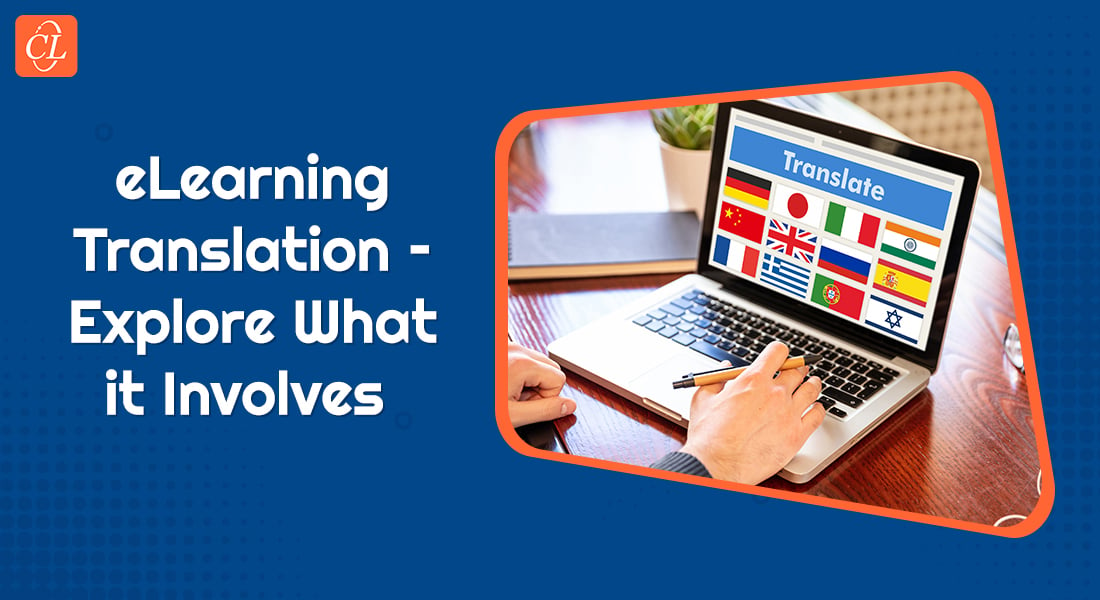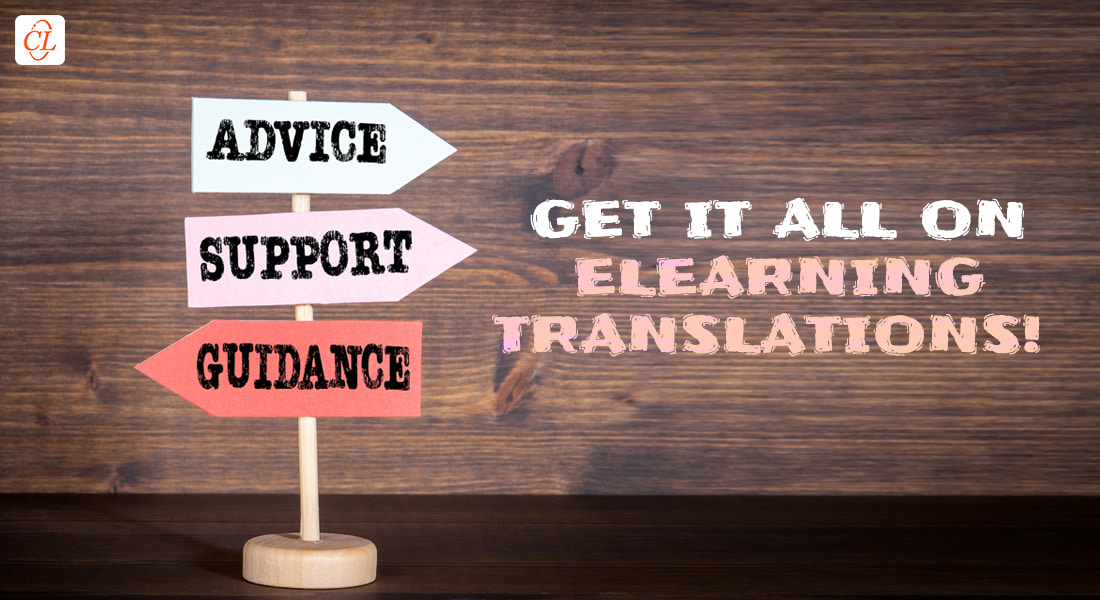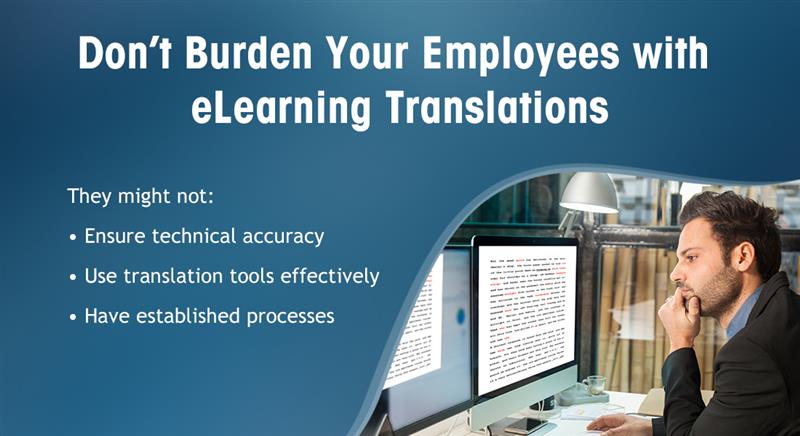The Importance of eLearning Translations in the Modern Corporate Training Landscape

Due to the COVID-19 pandemic and the emergence of remote work models, traditional corporate training methods have evolved during the last couple of years. Corporate training presents a host of geographical barriers to conventional training models, most notably the differences in language and culture. As a result, eLearning translation is becoming a buzzword that has been trending in the corporate sector as companies look to localize training. With organizations hiring employees in different parts of the world, this once frowned upon approach has become the norm in the modern corporate training landscape.
eLearning translation is one of the most important aspects of corporate training. Translating your content for a multicultural workforce has never been more important than it is today. eLearning translation aims to enhance training outcomes by not just translating training content but also adapting it to a specific culture or region.
In this blog, we’ll dive deeper into eLearning translation and share why it’s becoming an essential part of many modern organizations’ business plans.
Key benefits of eLearning translations for modern organizations
eLearning translations:
- Ensure Seamless Communication
- Improve Employee Satisfaction
- Boost Learning
Read on to explore more!
Understanding eLearning Translation
In the new normal, the eLearning industry is projected to grow by 10.3% to nearly $460 billion by 2026. We begin to see the changes in recent times when a growing number of organizations have begun to adopt practices such as global hiring, outsourcing and virtual corporate training. Traditional classroom methods of training just won’t cut it anymore.
By definition, the process of eLearning translation involves adapting corporate training material to a specific culture or geographic location by translating it to their employees’ preferred local language.
For instance, suppose you own a company in the United States, and you have employees working for you in different parts of the world where English isn’t the first language. You can have your training courses translated according to the language of specific regions or countries (e.g., French, Spanish, Hindi, Japanese, and Arabic).
The idea behind eLearning translation is to make corporate training material and courses accessible to a much wider range of your employees so that they can grasp the required skills, improve their performance on the job and help your organization grow in leaps and bounds.
Tips to Build High-impact Online Training Courses.
What eLearning Translation Typically Entails
eLearning translation is a complex process that often requires professional intervention from eLearning solutions service providers. The services on offer should be creating, translating, and aligning corporate training material based on the language and culture of your remote employees. Here’s what the process typically entails:
1. Technical Assessment
To start with, training managers carefully assess the eLearning course to understand its structure, multimedia elements, supporting documents, layout, and content.
2. Translation Roadmap
The next step requires hiring and working with a team of linguists, who specialize in your desired language. They then go through your existing course and create a translation roadmap. This process typically involves understanding stylistic preferences, technical terms related to your business, products and services and audio-visual guides.
3. Translation, Editing, Proofreading and Quality Assurance (TEP + LQA)
The next step involves translating, proofreading, and conducting an LQA (Language Quality Assurance) for the entire course’s content, that is, if you don’t have a team of internal reviewers to approve your content. Once the quality of your course’s translation has been authorized, the development team can move on to next stage of the eLearning translation project.
4. Multimedia Translation
If your training course contains audio or video clips, the next step typically involves a multimedia translation. In this process, the translation team prepares voiceover transcripts with the help of dubbing artists to cover all audio-visual elements while also keeping in mind the cultural nuances of the target audience.
5. Language Integration
Once the voiceover transcripts are ready, you need to integrate and synchronize them into your existing course’s content. By using rapid authoring tools, you can generate a translated file for each language that you want to translate your course into.
6. Final Review and Testing
The last step is to test your translated course for linguistic and functional accuracy before getting it ready for deployment. Put in a nutshell, you need to test your course and ensure that the text, audio-visual elements, and subtitles are synchronized to perfection.
The Main Benefits of eLearning Translation for Modern Organizations
Now that you have a fair idea of how eLearning translation works, let’s look at the key benefits of translating your training content into your employees’ preferred languages based on their local cultures:
1. Enhanced Communication
Perhaps, the most important benefit of eLearning translation is that it improves your employees’ internal and external communication. Training them using their own language will help them grasp and retain what they have learned better and use it to improve their operational efficiency.
2. Greater Operations or Service Range
With eLearning course translations, you can hire new employees from different parts of the world during your global expansion and enable them to deal with more and more clients and customers. This is an excellent way to capture a target market and add more revenue to your business.
There might be a billion people wanting your products. However, many of them won’t be able to access what you have to offer due to the language barrier.
3. Improved Customer and Employee Satisfaction
While most people consider English to be the world’s universal language, not everyone wants to use it, and that can include your employees and customers. Therefore, eLearning translation is a great way to accommodate your employee’s linguistic needs and lead to a more satisfying experience as happier employees which will likely lead to improved relationships with and reviews from your customers.
4. Improved Confidence
There’s an old saying, “communication is the art of being understood.” As simple as this sounds, there’s more to it than meets the eye. When you make yourself understood in various languages, it makes you appear more confident as an organization.
eLearning course development and translation services enable you to put your best foot forward and boost clarity through your multilingual communications.
5. Improve Global Talent Attraction
Outsourcing and remote hiring have become normal practices ever since COVID-19 became the new reality. However, most organizations must accept that while many candidates will possess the technical expertise or experience for the required role, they might not be fluent in English or the workplace’s local language.
Therefore, to attract global talent, you need to show that you value your potential employees’ cultures and languages and aren’t simply hiring them to cut costs. When you train them and communicate with them in their own language, you validate them.
This is another crucial and intangible benefit of eLearning translation that can play an essential role in ensuring your company’s global success.
It’s a Wrap!
Following the onset of the COVID-19 pandemic, organizations have expanded their workforce and clientele across the globe and, as a result, the corporate world has become even smaller. However, while acknowledging the benefits of a smaller and more connected world, you need to highlight the flip side of the equation.
While the effectiveness of eLearning as a corporate training method is undeniable, eLearning materials in a single language can diminish the effects of many tangible and intangible benefits. Therefore, modern organizations must use eLearning translation to localize training and upskill their employees in the language they understand and are comfortable with.
If there was ever a time to invest in professional eLearning translation services, this is it. With remote work and multicultural workforces becoming the norm, in the digital age we live in, this may well be the solution you need to ensure your organization’s sustainability and the ideal method to enhance your bottom line.
Still have questions about eLearning translations? Get your answers here by downloading this eBook! It’s free!





![5 Popular Trends Shaping eLearning Translations [Infographic]](https://blog.commlabindia.com/hubfs/blogs/popular-trends-elearning-translations-info.jpg)